How much is too much? It’s kind of like admitting your weight…do you ever really tell the truth? The scales may not lie, but if you can shave a few pounds off when reporting…why not? My nursing colleagues always told me that if during a health assessment someone reports a certain number of alcoholic drinks per day or week, multiply it by three. It is something folks typically don’t reveal truthfully.
April is Alcohol Awareness Month organized by the National Council on Alcoholism and Drug Dependence as a way of increasing outreach and education regarding the dangers of alcoholism and issues related to alcohol. Generally, it’s seen as an opportunity to help people think about how they use alcohol – including their drinking patterns and the role of alcohol in our lives.
Using Alcohol
Millions of people successfully consume alcohol without over-using, and there are guidelines to consider. The 2020-2025 Dietary Guidelines for Americans defines “one alcoholic drink equivalent as containing 14 grams (0.6 fl oz) of pure alcohol. The following count as one alcoholic drink equivalent: 12 fluid ounces of regular beer (5% alcohol), 5 fluid ounces of wine (12% alcohol), or 1.5 fluid ounces of 80 proof distilled spirits (40% alcohol). To help Americans move toward a healthy dietary pattern and minimize risks associated with drinking, adults of legal drinking age can choose not to drink or to drink in moderation by limiting intakes to 2 drinks or less in a day for men and 1 drink or less in a day for women, on days when alcohol is consumed.”
Facts & Statistics – Sobering Information
The Substance Abuse and Mental Health Services Administration (SAMHSA) conducts the National Survey on Drug Use & Health (NSDUH) annually. The 2019 study found that 85.6% of all 18 years of age and older who were surveyed had used alcohol at some time in their life; 69.5% within the past year; 54.9% within the past month. This same study found that 25.8% had engaged in binge drinking and 6.3% in heavy drinking in the past month. SAMHSA defines binge drinking as consuming 5 or more alcoholic drinks for males or 4 or more alcoholic drinks for females on the same occasion (at the same time or within a couple of hours of each other) on at least one day in the past month.1 Heavy drinking is defined as binge drinking on 5 or more days in the past month.
Alcohol contributes to about 18.5% of all Emergency Department visits and 22.1% of overdose deaths related to prescription opioids.2
Alcohol related deaths, estimated at 95,000 annually, is the third leading cause of preventable death in the United States behind #1 tobacco and #2 poor diet and physical inactivity.3
Alcohol-impaired driving accounted for 28% of overall driving fatalities in 2019.
Alcohol Use Disorder
Alcohol can be misused and abused to the point that it is a disease. Alcoholism is poorly defined as a disease; consequently, Alcohol Use Disorder (AUD) has been identified and defined as a “chronic brain disorder marked by compulsive drinking, loss of control over alcohol use, and negative emotions when not drinking.” AUD affected 14.5 million Americans aged 12 and older in 2019.
There are many symptoms related to AUD and the disease can be classified from mild to severe. Symptoms include:
- Being unable to limit the amount of alcohol you drink
- Wanting to cut down on how much you drink or making unsuccessful attempts to do so
- Spending a lot of time drinking, getting alcohol or recovering from alcohol use
- Feeling a strong craving or urge to drink alcohol
- Failing to fulfill major obligations at work, school or home due to repeated alcohol use
- Continuing to drink alcohol even though you know it’s causing physical, social or interpersonal problems
- Giving up or reducing social and work activities and hobbies
- Using alcohol in situations where it’s not safe, such as when driving or swimming
- Developing a tolerance to alcohol so you need more to feel its effect or you have a reduced effect from the same amount
- Experiencing withdrawal symptoms — such as nausea, sweating and shaking — when you don’t drink, or drinking to avoid these symptoms
Seek Help
There is help for those struggling with their use or over-use of alcohol. AUD can be successfully treated with medications, through behavioral and talk therapy and support groups. Recognizing that there is a problem is the first step.
- Do you ever wonder if you have a problem with alcohol?
- Do your friends or family express concern?
Behavioral Health Solutions has professionals who can help you. Take the first step to recovery and call today: 702-608-1976
1 SAMHSA. 2019 Methodological Summary and Definitions. https://www.samhsa.gov/data/report/2019-methodological-summary-and-defi…. Accessed December 8, 2020.
2 Jones, C.M.; Paulozzi, L.J.; and Mack, K.M. Alcohol involvement in opioid pain reliever and benzodiazepine drug abuse-related emergency department visits and drug—related deaths—United States, 2010. Morbidity and Mortality Weekly Report 63(40):881–885, 2014. PMID: 25299603
3 Mokdad, A.H.; Marks, J.S.; Stroup, D.F.; and Gerberding, J.L. Actual causes of death in the United States, 2000. JAMA 291(10):1238–1245, 2004. Erratum in JAMA 293(3):298, 2005. PMID: 15010446


